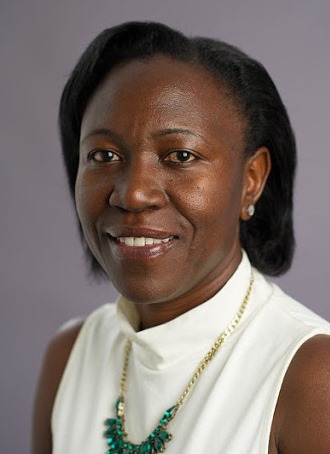Researchers from the Makerere University School of Public Health (MakSPH) are worried that children’s lack of knowledge on proper handwashing and face mask wearing could make it difficult to prevent the spread of Covid19.
Between August and September 2020, researchers led by Dr Christine Nalwadda, the head of MakSPH’s Community Health and Behavioural Sciences Department, sought to find out how children between the ages of 10 and 13 in Hoima District well knew how to wash their hands, wear masks and what they knew about Covid19, its spread and prevention guidelines.

The research team also included Dr Nalwadda’s co-principal investigator Lydia Kabwijamu, a research fellow at MakSPH, Investigators Dr Juliet Kiguli and PhD student Sarah Bunoti as well as research support assistant Maxecia Nabiryo.
The study involved 372 children from 18 villages in Hoima Municipality’s Bujumbura and Mparo Divisions. Of these, 206 (55.91) per cent were females. The majority (351 – 94.35 per cent) were in primary school while three (0.81) were out of school.
THE UPSIDE
According study findings published in a report titled Exploring Children’s Understanding of Covid19 and its Preventive Strategies: A cross sectional study among children aged 10-13 years in Hoima District, the children exhibited considerable knowledge of Covid19, its spread and prevention measures.
Dr Nalwadda and her team noted that the children could differentiate between Corona Virus from Covid19, and were aware of how deadly the viral respiratory illness was.
“Corona is the virus that brings the disease [called] Covid19,” the report quotes a 13-year-old participant as saying during a focus group discussion.
An 11-year-old also observed: “What has made me sad is that many people have been dying of corona and it might reach here and we also follow suit.”
Some 279 out of 372 (75.4 per cent) of the children were aware that Corona Virus spreads through droplets.
A 13-year-old boy told the research team: “If you gather more than the way we are [more than eight people], corona will get you because someone might sneeze without holding their mouth and their sputum falls on you.”
On the symptoms, at least 85 per cent of the respondents knew at least one symptom of Covid19. Cough was the most known symptom (known by 217 out of 372 or 58.33 per cent), followed by other flu-like symptoms (58.06 per cent), fever (40.59 per cent).
Some participants also had knowledge of asymptomatic cases. For example, an 11-year-old girl told researchers: “Someone may be having coronavirus and you don’t know; so, s/he can spread it to others if we are close to each other.”
But the findings indicate that “only three participants [0.80 per cent] knew that sudden loss of smell and taste are symptoms of Covid19.”
On prevention guidelines, majority of the children (306/372 0r 82.26 per cent) had moderate knowledge of meaures (knew three or less preventative measures); 64 (17 per cent) had good knowledge (knew four or more measures); while the rest (two) had no knowledge of any prevention guideline. Washing hands with soap and water was the most known measure, with 305 (81.99 per cent) listing this guideline, followed by face mask wearing at 54.57 per cent.
THE DOWN SIDE
When it came to handwashing, only eight out of the 372 children (2.15 per cent) correctly washed their hands. Researchers observed how well the children followed the steps World Health Organisation (WHO) recommends for proper handwashing.
These steps are: wetting hands with water, using soap and rubbing palms of hands together, focusing on the nails by rubbing tips on soapy palm, rubbing the back of hands and in between fingers, focusing on the thumb, washing the wrist, washing the nails, rinsing the hands with clean water and drying hands with a clean cloth or leaving to air dry.
Most children (324 or 87.10 per cent) performed well in using soap to rub palms of their hands together, followed by rinsing hands using clean water at 62.1 per cent and wetting hands with water at 56.99 per cent.
They performed poorly in cleaning the thumb (only 43 or 11.56 per cent focused on this step) and washing the nails – only 72 or 19.35 per cent undertook this step.
On wearing face masks, findings from the study indicate that “none of the participants followed all the WHO recommended steps when putting on the mask.”
These steps are: washing hands with soap and water before touching the mask; removing the mask from its packaging while holding it by the straps, holding the mask by the strings; inspecting it for damages and cleanliness; holding the mask by the earl loops, then placing a loop around each ear; adjusting the mask on the face to ensure no gaps are left on the sides; adjusting the mask over the nose, mouth and chin; and avoiding touching the mask surface.
Only 83 of the 372 (22.31 per cent) washed their hands with water and soap before putting on the mask; only 116 (31.18 per cent avoided touching the mask surface; while eight put on the mask without following any recommended steps.
For removing the mask, only two of the 372 (0.54 per cent) followed all the recommended steps. These steps are: cleaning or sanitizing the hands; avoiding touching the front of the mask; holding both ear loops, then gently lifting and removing the mask away from the face; storing the mask in a clean dry place; and finally cleaning or sanitizing the hands.
Comments are closed.